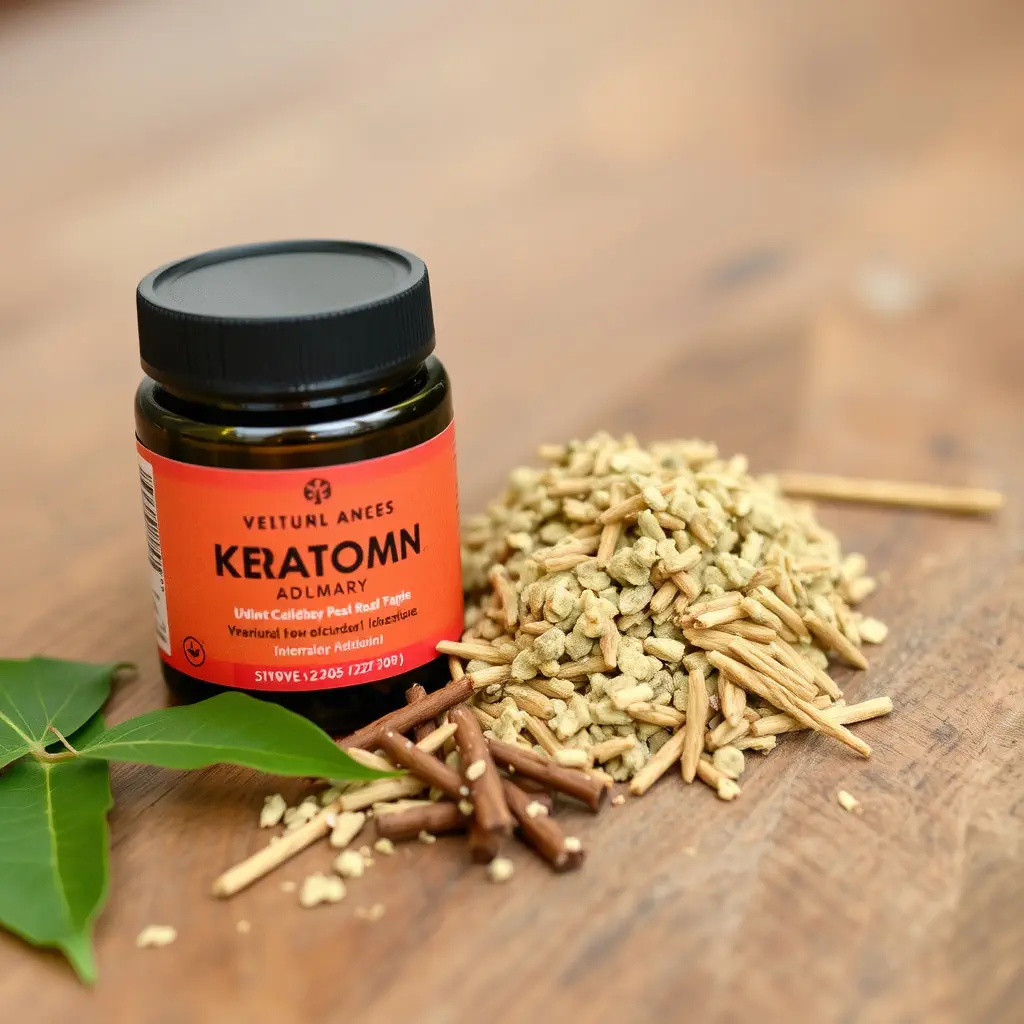Muscle soreness, commonly known as DOMS, occurs post-exercise and can range from mild to severe intensity, impacting daily activities. The severity of this muscle soreness is influenced by factors such as the type of exercise, an individual's fitness level, and the intensity of the workout. Kratom, a supplement derived from the leaves of Mitragyna speciosa, has been explored for its potential to alleviate pain associated with DOMS due to its alkaloids that may interact with opioid receptors. However, it's important to note the legal status of kratom in the United States and specifically in Michigan varies by locality; as of the knowledge cutoff date, it remains unclassified at the federal level, leading to a patchwork of laws across different states and cities within Michigan, with some having banned it while others permit its use under certain conditions. Users must verify the current legal status of kratom in their exact Michigan location, adhere to state and local regulations, and be aware that laws can change. When considering kratom for muscle soreness relief, it's essential to approach it with caution, mindful of dosage for both efficacy and safety to avoid potential negative side effects. Consultation with a healthcare provider is advised before incorporating kratom into any wellness regimen to ensure it aligns with individual health needs and local laws. Kratom can be part of a comprehensive approach to muscle recovery, which includes proper hydration, nutrition, stretching, and complementary therapies like massage or Epsom salt baths when combined with exercise. It should not replace professional medical care but rather be used as one component within an overall health strategy.
Muscle soreness can be a significant hurdle for fitness enthusiasts and athletes, often hindering recovery and performance. Exploring natural remedies, this article delves into the potential of kratom supplements as a relief strategy for muscle soreness. With a focus on understanding the phenomenon of muscle soreness and its interactions with kratom, we also examine the legal status of kratom in Michigan, addressing the question “is kratom legal in Michigan?”. Additionally, we provide guidance on how to safely incorporate kratom into your fitness routine, considering strains, dosages, and safety measures. For those seeking an alternative to traditional pain management, this article offers a comprehensive look at kratom’s role in muscle soreness relief, alongside complementary therapies for optimal recovery.
- Understanding Muscle Soreness and Kratom's Role: An Overview of Legal Status in Michigan
- Kratom for Muscle Soreness Relief: A Look at Strains, Dosages, and Safety Considerations
- Integrating Kratom into Your Fitness Routine: Best Practices and Complementary Therapies
Understanding Muscle Soreness and Kratom's Role: An Overview of Legal Status in Michigan

Muscle soreness, a common experience for individuals engaging in physical activity or exercise, can range from mild discomfort to severe pain that impedes daily functions. The intensity and duration of muscle soreness, often referred to as delayed-onset muscle soreness (DOMS), are influenced by factors such as the type of exercise performed, the individual’s level of fitness, and the intensity of the workout. Understanding the mechanisms behind muscle soreness is crucial for implementing effective relief strategies. One such strategy that has gained attention is the use of kratom supplements. Kratom, derived from the leaves of the Mitragyna speciosa tree native to Southeast Asia, contains alkaloids that may interact with the body’s opioid receptors, offering potential pain-relieving effects.
Kratom has been a subject of debate regarding its legal status in various regions due to its complex effects on the body. In Michigan, the legal standing of kratom is subject to specific regulations. As of the knowledge cutoff date, kratom is not explicitly classified as a controlled substance at the federal level in the United States, which leaves the legality of kratom up to individual state laws. In Michigan, it is important to note that the status of kratom can vary by locality; while some counties and cities have banned its sale, use, and possession, other areas permit its use within certain guidelines. It is always advisable to verify the current legal status of kratom in specific locations within Michigan, as legislation can change over time. Users interested in utilizing kratom for muscle soreness relief should ensure they are fully informed about and compliant with state and local laws regarding the use of this supplement.
Kratom for Muscle Soreness Relief: A Look at Strains, Dosages, and Safety Considerations

When exploring natural remedies for muscle soreness, kratom, a supplement derived from the leaves of Mitragyna speciosa, has gained attention for its potential analgesic effects. Users often turn to kratom not only for pain relief but also for its stimulant and sedative properties, depending on the strain and dosage. Among the numerous strains available, such as Maeng Da, Bali, and Borneo, certain varieties are favored for their pronounced pain-relieving qualities. For instance, Red Bali kratom is commonly used for its relaxing and soothing effects, which can be beneficial for alleviating muscle aches and pains.
However, it’s crucial to approach the use of kratom with caution, as the right dosage plays a significant role in determining its efficacy and safety. Overconsumption can lead to adverse side effects and is not advisable. The legality of kratom also varies by region; for example, in Michigan, the legal status of kratom is subject to change as regulations evolve. As of the knowledge cutoff date, kratom is a controlled substance in some states, including Michigan, which means it requires a prescription and cannot be purchased over-the-counter in these jurisdictions. Users must stay informed about their local laws before considering kratom for muscle soreness relief. Safety considerations also extend to potential interactions with other medications and pre-existing health conditions. It’s imperative to consult with a healthcare provider before incorporating kratom into any wellness regimen, ensuring that it is the right choice for individual needs and legal compliance.
Integrating Kratom into Your Fitness Routine: Best Practices and Complementary Therapies

When considering the integration of kratom into your fitness routine, it’s crucial to navigate the legality and potential benefits alongside health and safety practices. In states like Michigan, where the legal status of kratom can vary by locality, individuals must first verify its status within their specific jurisdiction. For those in regions where kratom is legal, such as Michigan, incorporating this supplement into a fitness regimen may offer relief from muscle soreness and enhance overall well-being. To safely and effectively use kratom as part of your exercise recovery strategy, it’s advisable to start with low doses to gauge individual sensitivity. Strains like Maeng Da or Bali are often favored for their pain-relieving properties.
Pairing kratom use with other complementary therapies can amplify its effects and promote a more holistic approach to muscle recovery and fitness maintenance. Techniques such as stretching, proper hydration, and balanced nutrition are essential to complement kratom’s analgesic qualities. Additionally, engaging in regular massage therapy or incorporating Epsom salt baths post-workout can further aid in the reduction of muscle soreness. It’s important to note that while kratom may serve as a valuable tool for relief, it should not replace professional medical advice or treatment when necessary. Always consult with healthcare providers before making significant changes to your fitness routine, especially when integrating new supplements like kratom.
Muscle soreness can be a significant hurdle for individuals engaging in physical activities, particularly during recovery and fitness routines. This article has explored the intricacies of muscle soreness and how kratom supplements may offer relief, with a focus on its legal status in Michigan, effective usage of various strains, and optimal dosages while emphasizing safety considerations. For those considering incorporating kratom into their fitness regimen, it is crucial to integrate it judiciously alongside other therapies for a holistic approach to wellness. Understanding the nuances of kratom’s legality and its potential benefits within the context of Michigan’s regulations provides a solid foundation for informed decision-making. In conclusion, while kratom may serve as a valuable tool for muscle soreness relief, it is imperative to approach its use with caution, respecting its legal standing and heeding expert advice for safe application in one’s fitness journey.






